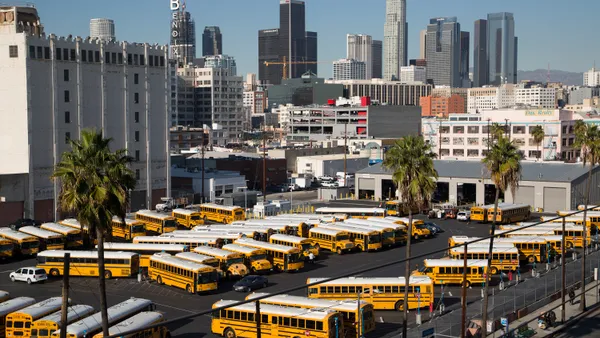Dive Brief:
- In a recent report that pulled data from the United Nations and Brookings, Axios detailed the world's 10 largest metro areas with a focus on population and GDP per capita. The cities, in order, are: Tokyo, New Delhi, Shanghai, Sao Paulo, Mumbai (India), Mexico City, Bejing, Osaka (Japan), Cairo and New York.
- These 10 cities top the list of 31 megacities around the world that are homes to at least 10 million people. Due to the pace at which cities are growing — there will be eight cities with around 25 million people each by 2030 — Axios predicts a new definition of "megacity" will need to be written.
- The report also compares populations of the top 10 metro areas to their populations in 1975. While some cities, like Tokyo, have maintained a megacity status for years, others like New Dehli experienced an enormous population boom over recent decades.
Dive Insight:
As indicated in these statistics, the megacity growth is happening most rapidly in less developed countries. Migration fuels this trend as people abandon countryside roots to search for better city-based jobs, then natural increase propels the city population forward. According to the U.N., 55 global cities have faced population decline since 2000 — including New Orleans and Sendai, Japan, following natural disasters, and Detroit, due to a decline of jobs — yet the U.N. predicts more than 80% of today's cities are vulnerable to "disaster-related mortality or economic losses."
While urban development can spur economic growth and opportunity, megacities also run the risk of resource depletion. Technological advancements and improved medical facilities around the world have reduced the death rate (boosting population), yet, in order to curb poverty and maintain a decent quality of life, less developed countries must produce jobs more rapidly, and arable land must be preserved for food systems to flourish.
In the U.S., the rise of megacities is not so prevalent as suburban life has maintained popularity and opportunity. In fact more suburbs and towns are embracing the "smart city" mindset and implementing high-tech and sustainable solutions to improve quality of life. In a recent interview, Ellen Dunham-Jones, coordinator of the M.S. in Urban Design at Georgia Institute of Technology, told Smart Cities Dive that "the divide between cities and suburbs is getting blurred all the time." Urban planners should keep suburban growth at top of mind in order to maintain a more level population density moving forward.












